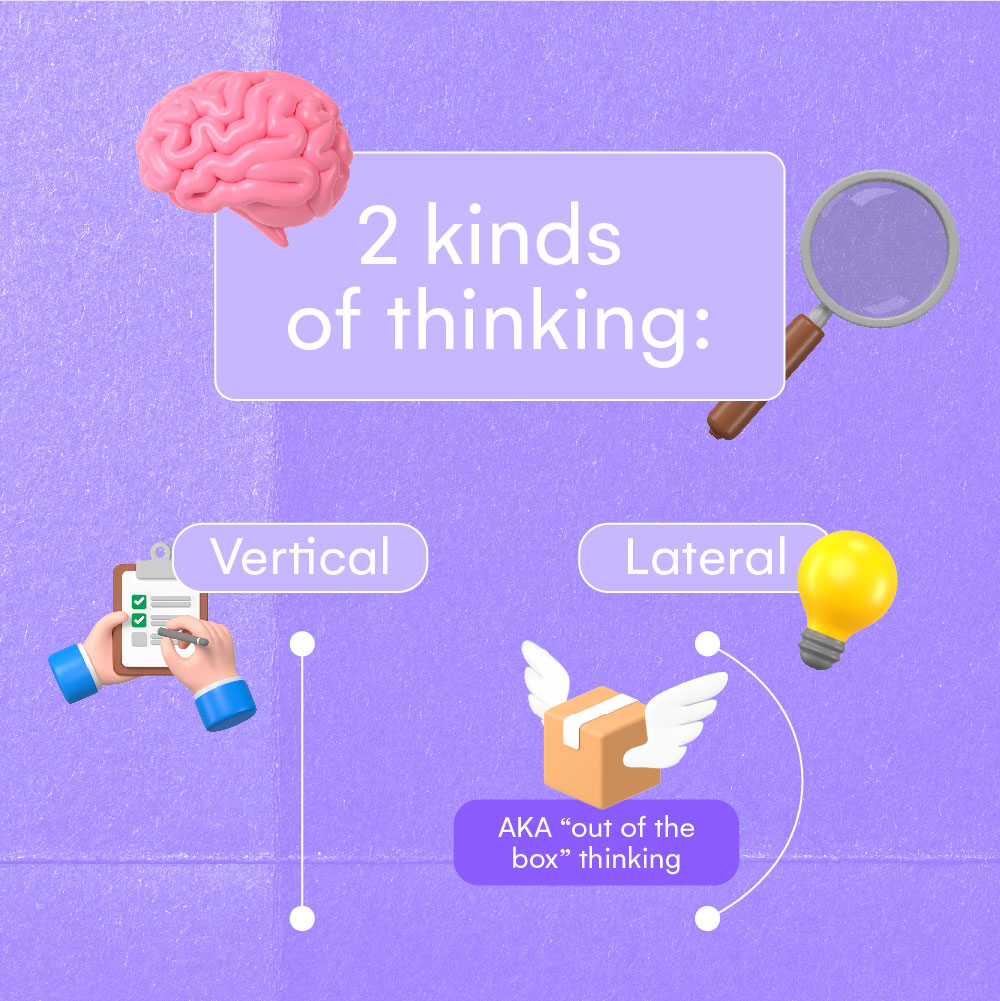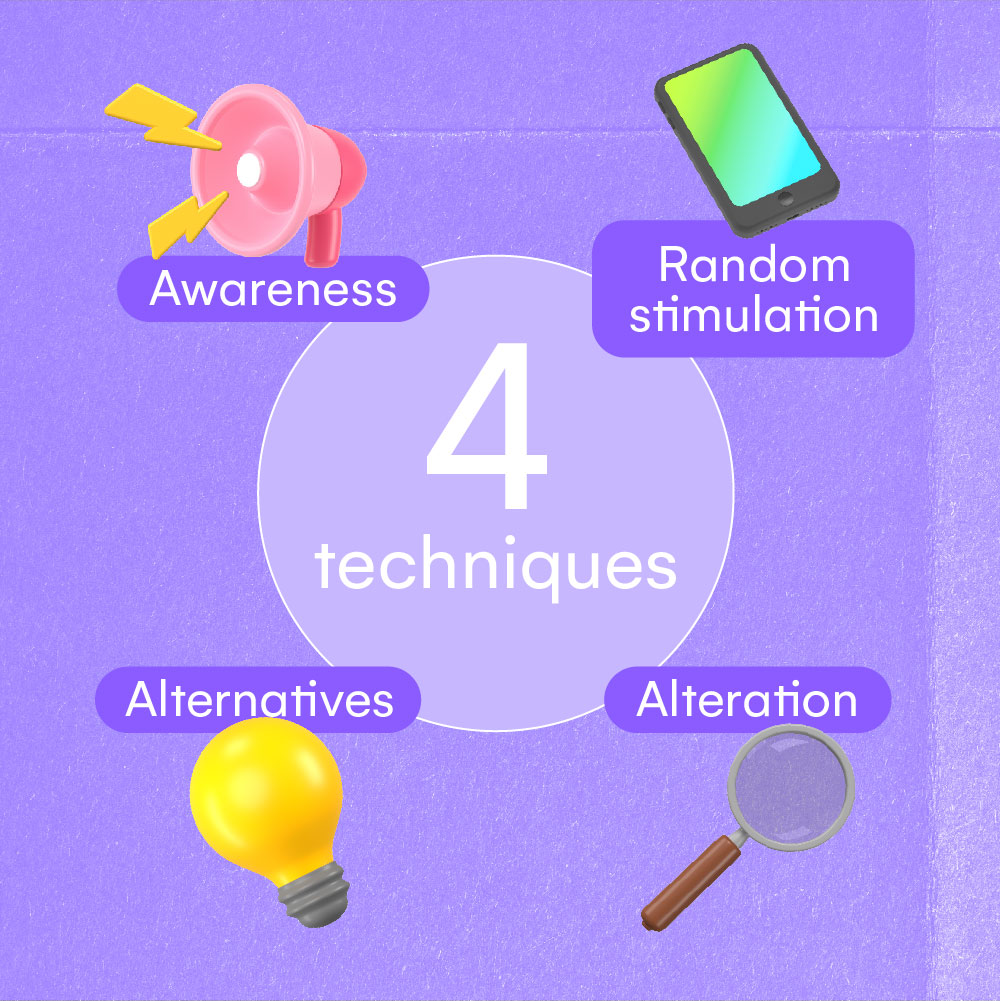Since its birth in 1967, the concept of lateral thinking has permeated a variety of settings, from classrooms to businesses. And while many people are familiar with the concept of creative and lateral thinking, few are aware of the story that led a young and imaginative doctor born on the island of Malta to formulate a theory that would impact millions of people.
Spoiler alert: sometimes the best ideas are sparked by a lack of resources – which forces our brains to explore unexpected paths. Want to know how? Read on about the challenges this theory had to face before getting recognized, and how you can make the most of it in your daily life.
Imagine you are a kid and you have no toys to play with, but you want to play anyway. This is not a test: it’s the situation. Indeed, Edward de Bono’s father was a professor of medicine, and his mother – a political campaigner, and Edward was often left to his own devices.
As new toys could not be imported into Malta at the time, he began to think creatively about using resources he had at his disposal in new ways. As he got older, he envisioned that creative thinking could be the way to save the world from prejudice, arguments, and conflict.
In 1967, while working as an Assistant Director of Research in the Department of Investigative Medicine at the University of Cambridge, de Bono published his first book – The Use of Lateral Thinking. According to de Bono’s theory as it is laid out in his books, lateral thinking is the creative, “out of the box” thinking needed to come up with better solutions to problems. It requires considering unlikely, unexpected, overlooked angles to come up with new ideas and importantly, can (and should, according to de Bono) be trained.
However, how is this thinking framework different from the most common ones?
De Bono argued that it is not beneficial to move from “certainty to certainty”, but instead – possibilities need to be considered before arriving at a decision. (Edward de Bono on creative thinking).
Lateral thinking complements vertical thinking – the kind of linear thinking that uses logic, reasoning, and step-by-step problem solving that would typically lead to the most “obvious” solution.
De Bono’s ideas became popularized in 1985 with the framework of the Six Thinking Hats. It became de Bono’s most popular book, and today, continuing on his legacy after his recent passing in 2021, there are training courses on it around the world.
In his Six Thinking Hats theory, de Bono provides an organized way to improve decision making and train creative thinking by considering a problem from six different angles, or modes of thinking. In a personal discussion or work meeting, each person can “wear” one of the hats and contribute ideas from that angle. This improves the decision-making process and has notably shown to make meetings more productive, quick and impartial through:
- A sequenced approach to a discussion, moderated by the “process hat” while the other “hats” take turns contributing ideas
- Making comments about the issue, not the person expressing the idea – “That’s the red hat thinking.”
- Considering possible angles by purposefully framing solutions around various considerations – “Let’s put on the white hat now.”
Put on Edward de Bono’s Six Thinking Hats for more productive discussions and more creative decision-making
- Blue hat – process management: steps, timelines
- White hat – objective thinking: facts and data
- Red hat – emotions: gut reactions, feelings, likes and dislikes
- Black hat – analyzing risks
- Yellow hat – considering benefits
- Green hat – creativity, adding more and more new ideas into the mix
When you have any problem to solve or decision to make, try using these four lateral thinking techniques:
- Awareness: According to de Bono, the brain thinks in two phases: 1) it perceives patterns and 2) it uses that perception to reach conclusions. De Bono placed special emphasis on the first phase. We must be aware of our immediate biases in perception. We need to look for any automatic tendencies we have and recognize how our brain perceives information in order to improve on the second phase and expand our possibilities of arriving at new understandings.
- Random stimulation: Instead of focusing more deeply on the problem, narrowing in and tuning out all distractions – de Bono suggests – to get distracted! The idea is to let chance do some of the work. This is why you may find that taking a walk and looking around aimlessly can sometimes be just the nudge you need for a new idea to pop into your head when you least expect it.
- Alternatives: Seek out different ways to look at things. Even when you have one solution, consider others! Don’t necessarily settle on the first one. The next one might be even better!
- Alteration: This is where you try to get your brain to try to override its automated thinking tunnels that it has spent its life digging (otherwise known as – neural connections). Try to break a problem down, mix up the pieces, and put it together again to see it from a different perspective.
After too many years of conventional school raising us (arguably most of us) to be good memorizers of information, takers of tests, and rule-followers, the notion of schooling is finally getting shaken out of its shell and transformed. We are seeing creative and design thinking, critical problem-solving, and decision-making entering the scene as skills that are crucial to meeting modern challenges.
De Bono knew this before it ever became mainstream and urged the world to think better, think more courageously, think more creatively. We can use his theories of lateral thinking and the six hats to get unstuck from our deeply ingrained ways and see the world and anything it throws at us in more ways than one.










